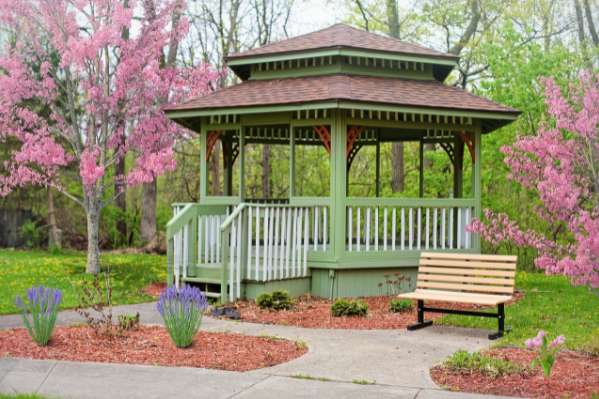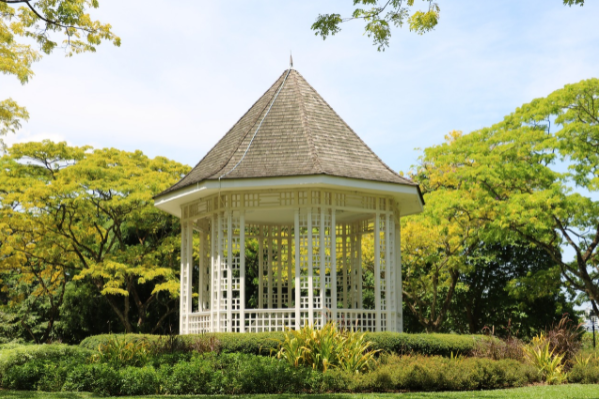Adding a gazebo to your garden can add a stylish element to it and be functional at the same time!
 Photos from: Pixabay
Photos from: Pixabay
However, there are so many things to consider before actually buying one. This includes the size, where it will be positioned, what it is used for, the material it is made of and its design. You have to get every aspect right if you want to find the gazebo that suits you, your loved ones, and your garden. If you are serious about investing in a pavilion, we have some useful tips to help you make your decision.
use
The first thing to consider is why you want a gazebo. This will affect what you buy as your reasons will affect the material and size, among other things. There are some informative instructions available that you should read to help you. For example, if you only want to use for special occasions, a temporary one is not only better for you, it is also inexpensive and does not take up permanent space. As Wi-Fi and technology keep evolving, more can be done in your gazebo. You can work with it or even enjoy a movie in the evening without a date or noise from other members of your household. So if you want to use it on a daily basis, perhaps to work in or as a comfort space, you may want a more permanent pavilion structure. Some even have unique features tailored to your needs. So you need to be clear about what you want from the start.
You also want to consider a design that will fit your current garden. Or when you revise the design, how a new one complements your ideas. Looking for unique garden furniture will tie in your gazebo. Your garden is practically an outside space of your home, with your gazebo as a contrast. So if everything looks like it belongs, your garden looks amazing and nothing is out of place.
size
Bigger is not always better, and it sounds right with pavilions. First, it has to be in proportion to your garden – it's not there to take up all of the space, but part of it for a specific need. A large gazebo in a small garden will ruin your outdoor space and is an expensive way to do it. At the same time, however, you don't want to invest in a gazebo that doesn't add much to your current living space.
As a general guide, consider the following
- If you intend to use your gazebo for intimate time with your partner or for relaxing in privacy, consider a gazebo the size of your bedroom.
- If it is intended for social gatherings, consider the average number of people who come to your home at one time to celebrate. Typically, 18 feet by 18 feet will comfortably accommodate 20 guests.
- If there is to be a smaller gathering, perhaps between 12 and 15 adults, a pavilion about fourteen by fourteen feet will do.
- If just you and your immediate family are looking to relax in your gazebo after dinner on a summer evening, an 8 x 8 foot gazebo is a great choice.

place
Your pavilion will go inside your gardenSo you need to think about where to position it. It would be good for you to consider how your garden is being used and will likely be used in the foreseeable future. It would be a bad choice to put your gazebo in the middle of the garden if that's the only place you have extended sun. The bottom line is that you don't want your pavilion to suddenly take up most of the space if your garden is used multiple times. You want it to compliment your garden and not make it look cluttered while keeping the balance of what it is being used for. For example, if you plan to use it for work or relaxation, you may want it to be outside your main house and possibly behind it some bushes or a tree. Alternatively, using it to get acquainted, it is ideal if you have it in a central location in your yard.
Structures
Pop up
These are the fastest pavilions to construct and deconstruct, most of which only take a few minutes. They often have a bag with a pre-made frame and mesh wall panels to store them in. Although they are made of fire retardant materials, the fabric used for them is not meant to be used all year round. However, they are ideal if you want a little extra space when sleeping outdoors and are the cheapest of all three structures featured in this article.
Convertible top
This is also a temporary solution, which is ideal when you are limited in space and therefore want to use a gazebo only for special occasions. Like pop-up pavilions, canopies are easy to assemble and relatively light. Their frames are easy to fold up and store. Mesh walls keep the mosquitoes away. If you are renting your home this type of structure will be a good choice for you as it can be dismantled and moved to another location.
Hard top
These are the most expensive of the three as they are often permanent structures. The material you choose must be able to keep you relatively warm in colder seasons and cool in warmer seasons while letting in a decent amount of light. It needs to be looked after so that you can use it for several years. Some can even accommodate fire pits and grills. Hard top pavilions can become an extension of your home all year round.
Pavilions are an investment and can add value to your property if you choose the right one. You have to weigh your needs against the space you need to get one the right size. It pays to follow our tips to get a gazebo that will suit your garden and be within your budget. Not only is a bad purchase a waste of money, but it most likely means that your gazebo is not being used as intended.




